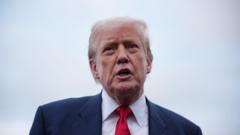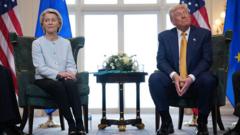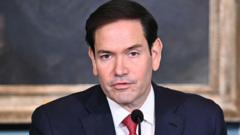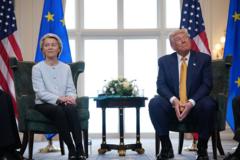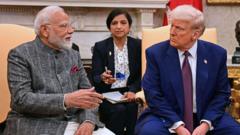Trump's recent tariff announcements have reshaped international trade dynamics, yet the potential negative repercussions for both the US economy and its international partnerships could be significant. The evolving situation demands careful observation in the face of looming political challenges.
Trump's Tariff Strategy: Triumphs and Tribulations Ahead

Trump's Tariff Strategy: Triumphs and Tribulations Ahead
As President Trump claims victories through new import tariffs, the long-term implications for the US economy and its global relationships remain uncertain.
In April, President Donald Trump shocked the world by announcing sweeping import tariffs, only to place most of them on hold due to a subsequent global financial panic. Fast forward four months, and Trump is now promoting what he labels a series of triumphs, having secured a few trade deals with select partners while unilaterally enforcing tariffs on others without inciting the financial disruptions experienced previously.
While Trump asserts that these measures will boost domestic manufacturing, attract hundreds of billions in foreign investment, and increase US revenues, the validity of these claims remains questionable. Notably, the shift from a gentle tide towards free trade to a formidable wave marks a significant change in global economic relationships, though immediate repercussions appear less drastic than predicted.
The crucial deadline of August 1, set by US policymakers, loomed large: reach new trade terms with the US or face steep tariffs. Despite optimistic forecasts from Trump's advisers of signing "90 deals in 90 days," only about a dozen agreements were actually finalized by late July, many of which were concise and lacking detailed stipulations typical of past negotiations.
The UK was quick to respond, resulting in a baseline tariff of 10% on most British goods, a slight relief compared to the 15% levied on nations with larger trade deficits with the US, such as the EU and Japan. Certain countries unable to commit to heightened purchases of American goods faced heavier tariffs, expanding the list of nations subject to US trade conditions.
One positive note is that companies are now equipped to make informed investment and hiring decisions, inspired by reduced uncertainty regarding tariff rates. The financial markets have benefitted from this newfound clarity despite the increased burden of tariffs compared to previous levels.
However, as soaring tariff averages threaten US consumer prices, the real impact on Trump's base could pose significant political risks. With predictions of resultant price increases looming, Trump's plan to cut taxes might be delayed, potentially harming consumer spending.
In terms of global repercussions, countries like India and Germany face markedly different effects from these tariffs, highlighting the nuanced relationship between the US and its trade partners. The newfound momentum for the UK to strengthen ties with the EU and pursue a trade deal with India speaks to shifting alliances in response to Trump's unpredictable trade strategies.
The uncertainty surrounding various unresolved trade agreements—including with Canada and Taiwan—alongside a recently extended negotiation window with Mexico, compounds the challenges ahead. Trump’s objective of bringing production and jobs back to America amid rising tariffs may ultimately yield limited success, especially as long-standing allies contemplate fostering economic connections that bypass the US.
As history continues to unfold, the ramifications of Trump's tariff policies will likely take years to reveal, and the voters who supported him may soon confront the consequences of these decisions through increased prices and a shrinking array of choices in the marketplace.


